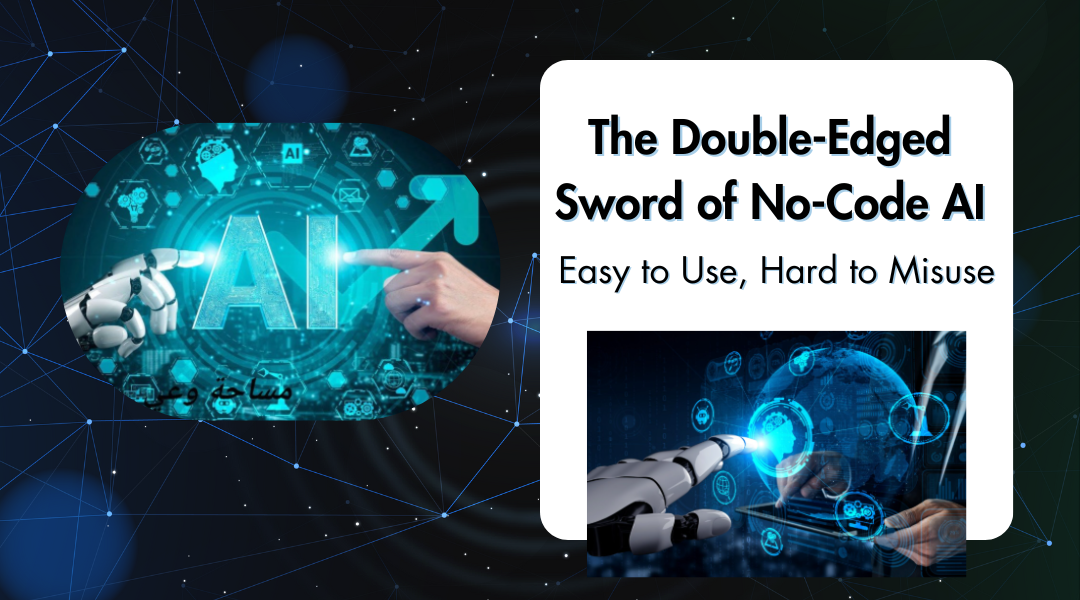No-code AI tools are a game-changer—they let anyone build smart systems without writing a single line of code. That’s incredible, but it’s also a little scary. When AI becomes this accessible, we need to ask: Just because you can build something, should you?
Imagine a small business owner with no tech background creating an AI chatbot to screen job applicants. Sounds efficient, right? But what if the model accidentally learns biases from past hiring data and starts rejecting qualified candidates based on gender or ethnicity? The creator might not even realize it’s happening.
This isn’t hypothetical. In 2023, a bakery owner in Toronto used a no-code tool to automate customer service, only to discover the AI was rudely dismissing gluten-free requests because it mimicked snarky online reviews it was trained on. Oops.
No-Code AI: Where to Start Without Getting Overwhelmed
Diving into no-code AI feels like walking into a candy store—too many options, and no idea where to begin. Here’s how to pick the right tool without drowning in choices:
1. Know What You Actually Need
- Predictive analytics? Try Obviously AI or Apteo (great for sales forecasts).
- Image recognition? Lobe or Teachable Machine (perfect for sorting product photos).
- Text analysis? Levity (helps with customer feedback sorting).
- Workflow automation? Zapier’s AI features (connects apps without coding).
2. Be Honest About Your Tech Skills
Some platforms are drag-and-drop simple; others require tweaking settings like a car engine. If spreadsheets already make you sweat, stick with the most intuitive options.
3. Data Matters—Don’t Skip the Prep Work
Garbage in, garbage out. A marketing agency once fed messy social media data into a no-code sentiment analysis tool and got nonsense results. Clean your data first—no tool fixes that.
4. Watch Out for Hidden Costs
Free tiers are great for testing, but scaling up can get pricey. One startup got burned when their “free” AI chatbot started charging per interaction after 500 messages.
Learning No-Code AI Without Losing Your Mind
You’ve picked a tool—now what? Skip the jargon-filled manuals and try these instead:
- Platform tutorials: Most tools (like Make.com) have step-by-step walkthroughs for real tasks, like automating invoice sorting.
- YouTube deep dives: Channels like No-Code Founders break down projects in plain English.
- Community wisdom: Join Reddit’s r/nocode or indie hacker forums. When a florist used GPT-3 to write product descriptions, the community helped her tweak prompts to avoid robotic phrasing.
Pitfalls Even Smart People Fall For
- Expecting magic: No-code AI won’t replace human judgment. A real estate agent thought an AI pricing tool would perfectly value homes—it didn’t account for local quirks like “next to a noisy highway.”
- Overengineering: A fitness coach built a complex AI meal planner when a simple checklist would’ve worked. Start small.
- Ignoring ethics: A blogger automated content generation, not realizing the AI was plagiarizing. Always double-check outputs.
Real Wins From Non-Tech Users
- A vineyard in Spain used a no-code sensor system to predict grape yields, cutting waste by 30%.
- A teacher in Kenya trained a voice-recognition model to grade language pronunciation, saving hours of manual work.
- A vintage shop in Brooklyn built an AI that IDs clothing eras from photos, making inventory sorting a breeze.
Try It Yourself: No-Code AI in 10 Minutes
Grab Teachable Machine (it’s free) and train it to distinguish between coffee mug and water bottle photos. Upload 20 images of each, hit train, and boom—you’ve just built an image classifier. No PhD required.
The Bottom Line
No-code AI is powerful, but with great power comes… well, you know. The best creators don’t just ask “Can I build this?” but “Should I?”—and that’s what keeps tech human.
